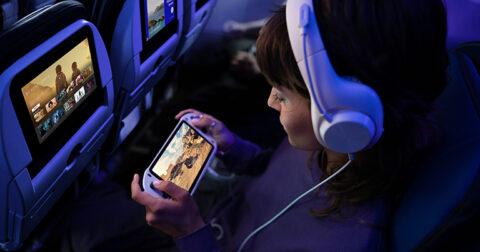“Looking for the latest insights on how technology and customer experience are shaping airline and airport operations? Check out our newest update for 2025 featuring the latest trends and innovations: 12 Technology and CX Trends That Can Enhance Airline and Airport Operations in 2025.”
Every year, the editorial team at FTE looks into the crystal ball to offer our predictions on the trends and technologies that will shape the air transport industry. This year, our list comprises 10 trends that we believe will ensure airlines and airports can improve and simplify the passenger experience, enhance business performance, and support the post-COVID-19 recovery.
Entering the metaverse

As the metaverse hype dominated last week’s CES 2022 show, we thought it is only fitting to examine what this new reality would mean for the future of travel. So, what is the metaverse? Put simply, the metaverse is an immersive virtual reality experience where people can interact with digital objects and digital representations of themselves and others. The Oculus VR headsets already give a good idea of what this experience could be like, but the metaverse is expected to bring this virtual reality to a whole different level (think Ready Player One-type scenario). In the near and medium-term it is highly unlikely that the metaverse will have any impact on the way people travel, but considering the hype around it, it is important for the air transport industry to keep an open mind on the opportunities it could create. The way we see it, the biggest potential of such an immersive experience is in the “inspiration” stage of travel. For instance, travel brands could look to inspire bookings by allowing consumers to preview experiences in the metaverse before making a purchase. Technologies such as virtual reality (VR) and augmented reality (AR) could be powerful tools to help people visualise their upcoming trips. In the past we have seen major airlines tap into this kind of technology. Emirates, for instance, introduced an immersive, 3D and 360-degree view of the carrier’s interior cabins, which could be previewed via web VR technology on its app. The central aim is to supply customers with better pre-purchase information and a sense of control over their flying experience prior to boarding.
But the use of the metaverse could expand way beyond stimulating consumer demand, and into use cases like creating a collaboration platform for remote workers, cabin training, aircraft maintenance, design and airport operations. KLM Royal Dutch Airlines, for example, launched a trial of a 3D virtual space, called Glue, where remote participants using VR can collaborate using features like whiteboards, sharing videos, web pages, and presentations as they would in the physical world.
In this interview with Reuters, Boeing’s Chief Engineer, Greg Hyslop, shared an exciting vision of utilising the metaverse to create the factory of the future, defined by immersive 3D engineering, where engineers around the world would be able to use VR headsets to collaborate.
The way we work and collaborate has already changed drastically in the past couple of years since the pandemic hit, so it won’t come as a surprise if the metaverse eventually becomes the next Zoom.
Let’s face it, the metaverse in its full potential is a long way away, but there are clearly some opportunities that could be utilised in the near-term.
Experiential retail coming to the airport
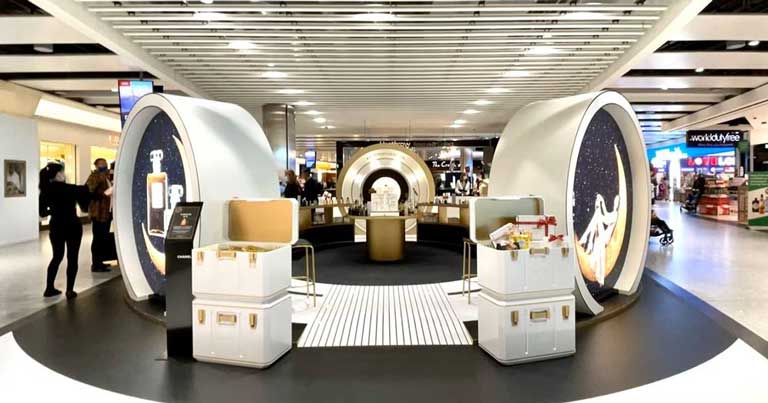
On the topic of immersive experiences, it is important to note that we don’t need the metaverse to make the customer journey more interesting and improve conversion. The retail sector has been using VR and AR to help consumers digitally try on clothes and accessories for a while now, so we are likely to see this trend picking up a lot more in airport retail, too. Last November, ahead of the Christmas season, Heathrow Airport partnered with Chanel, Dufry and JCDecaux to launch a No 5 Spaceship activation in the departure lounge at Terminal 5. The activation includes a Find No 5 game for consumers, and sells the brand’s fragrance line as well as a curated offering of skincare and make-up products. An AR digital screen allows shoppers to virtually try on products, with the pop-up being the only travel retail location to sell Chanel’s advent calendar. The pop-up has been seen as a great “advert for travel retail” and a “vote of confidence” from brands such as Chanel for airports such as Heathrow, commented Heathrow’s Airport Retail & Property Director Fraser Brown, who is also part of FTE’s Advisory Board.
Indeed, old-fashioned ‘bricks and mortar’ shopping is in decline and such experiential retail tactics could be the answer to increasing conversion and yield at the airport. To drive the discussion forward, FTE is excited to this year launch the brand-new FTE World Airport Retailing Summit, which promises to be the most adventurous and energetic airport retail convention ever, and which will put technology at the heart of the airport retail proposition.
Interested in the latest technologies and trends? Sign up to our newsletter >>E-commerce and super apps

With the negative impacts of COVID-19 on the industry’s ancillary and commercial revenue streams, it is more important than ever for airlines and airports to come up with new ways to diversify their offering. Technology, such as e-commerce, will once again have a big part to play here. AirAsia is a prime example of an airline that is finding new ways of doing business by “becoming a digital lifestyle brand”. The airline has diversified its offering to create a unified e-commerce platform, powered by technology and data, and has previously shared its ambitions that, by the end of 2024, 50% of its revenue will be coming from non-flight-related, non-aviation-related revenue. In particular, the carrier’s commercial strategy focuses on three main pillars – travel, e-commerce, and fintech.
Singapore Airlines is another Asian carrier doubling down on the e-commerce trend with its new e-commerce subsidiary called Pelago. The platform offers over 200 curated experiences – from attractions and city tours to local hidden gems. In the U.S., JetBlue Airways debuted Paisly, a travel website to upsell products such as rental cars, hotels, and theme park tickets. Airports are also setting up e-commerce platforms with recent examples including Toronto Pearson and JFK International Air Terminal (JFKIAT), who have both launched new digital marketplaces to allow customers to purchase duty free products online before they fly.
Data is at the core of this trend, and this year we expect airlines and airports to come up with new ways to truly maximise on the wealth of data already available to improve revenue management and personalisation.
The rise of urban air mobility
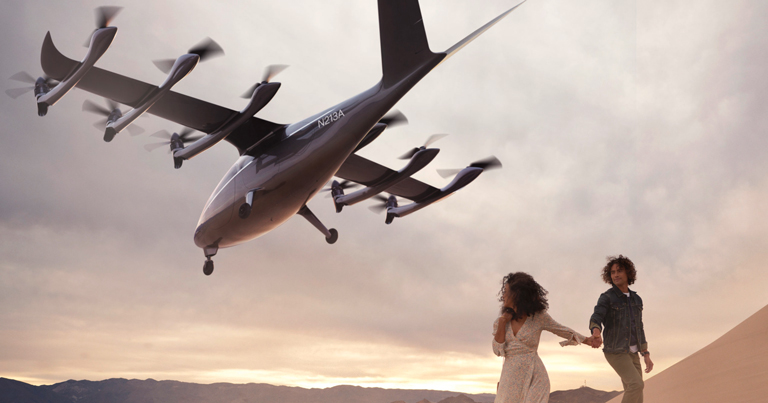
Urban air mobility gained a real momentum last year with significant investments from some of the biggest aviation industry players. For instance, United Airlines placed a $1 billion order for Archer’s eVTOL aircraft; American Airlines and Virgin Atlantic announced partnerships with another pioneering startup in the space – Vertical Aerospace; Brazilian airline Azul signed a commercial deal with German electric aviation start-up Lilium worth up to $1 billion; meanwhile Japan Airlines and GOL both partnered with Avolon to create eVTOL ride sharing businesses in Japan and Brazil, respectively. A number of airports and airport operators around the world are also accelerating this trend. Groupe ADP and Skyports announced late last year that they will be developing Europe’s first test vertiport in France, as a significant step towards launching commercial Advanced Air Mobility (AAM) services in time for the 2024 Paris Olympics. Munich Airport and SEA Milan Airports partnered with Skyports to explore the deployment of eVTOL ground infrastructure. Elsewhere, airports in Rome, Nice and Venice launched a new company, called Urban Blue, with the aim to accelerate the development of urban air mobility infrastructures internationally.
The importance of the topic was also reflected in the inaugural FTE Air MobilityX Summit, which took place during FTE Global 2021 in Las Vegas in December. The summit offered rich insights into what the mobility ecosystem of the future will look like and how air transport industry stakeholders can successfully integrate with it. Seeing the industry’s excitement and appetite for the development of urban air mobility during the event showed us that there’s a big growth opportunity, which will continue throughout this year and beyond.
Interested in the latest technologies and trends? Sign up to our newsletter >>Sustainability
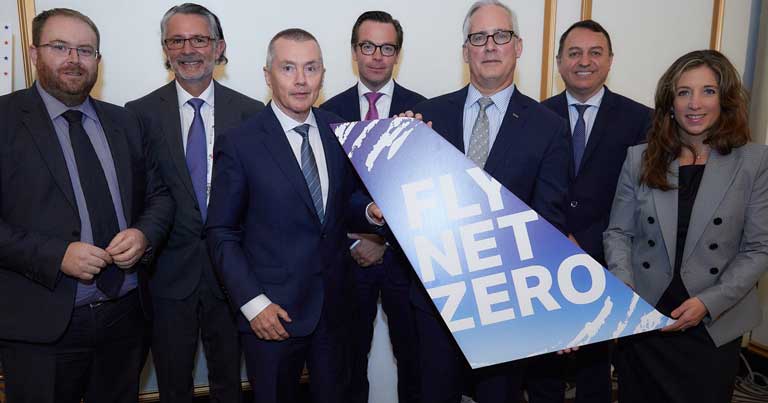
Despite the COVID-19 crisis, airlines and airports are strongly committed to investing in technology that will help them reduce their carbon footprint and ensure a more sustainable future. Our insights suggest that the majority of innovation projects that are getting the green light at present are sustainability focused. This year’s SITA IT Trends report also highlights that sustainability has moved higher on airport and airline CIOs’ agendas.
In a big development last year, the global air transport industry committed to reaching net zero carbon emissions by 2050, during the International Air Transport Association (IATA) 77th Annual General Meeting. Net zero will be reached through a combination of climate action initiatives. This includes supporting new aircraft technologies, such as hydrogen and electric, as well as improvements in operational efficiency and infrastructure. The acceleration of the production and uptake of sustainable aviation fuel (SAF) is expected to play a major role in reducing the climate impact of aviation.
Technology will also play a key part in ensuring a more sustainable future. For instance, as part of a new partnership, Etihad and Microsoft will leverage the latest tools and technologies such as advanced analytics and AI to measure and benchmark Etihad’s environmental footprint, allowing the business to implement and assess carbon efficiency savings across its business operations. Last year, Virgin Atlantic, Air France-KLM and Delta Air Lines launched a new Aviation Climate Taskforce (ACT) together with Boston Consulting Group to tackle the CO2 emission challenge. The Taskforce stated that it aims to stimulate innovation in the next generation of technologies, principally focussed on critical medium-term solutions, such as synthetic fuel and direct air capture. Over time, the portfolio will expand to include more near-term solutions, such as emerging bio-based Sustainable Aviation Fuel (SAF) pathways, and long-term solutions, such as hydrogen technologies. In a press release supporting the launch of the ACT, Amelia DeLuca, Managing Director of Sustainability, Delta Air Lines, said: “We’re still too far from real, scalable solutions to clean air travel. We need SAF to be just as accessible as oil and new engine technologies to come to market exponentially faster if we are going to meet industry goals. These coalitions help us more effectively impact our carbon footprint by pooling together resources and funding to define the next chapter of sustainable aviation.”
Electric aircraft are also worthy of a mention with a number of companies working on electric commercial planes, including Airbus, Boeing, JetBlue and Eviation, just to name a few. In fact, the world’s first all-electric “commuter” plane, Alice, made by Israeli company Eviation, is preparing for its first test flight at an airport near Seattle. The prototype plane can accommodate nine passengers and two crew members, and Eviation claims that it could reduce maintenance and operating costs by up to 70% compared with commercial jets. However, there are still some regulatory hurdles to consider, which means electric planes could still be a few years away.
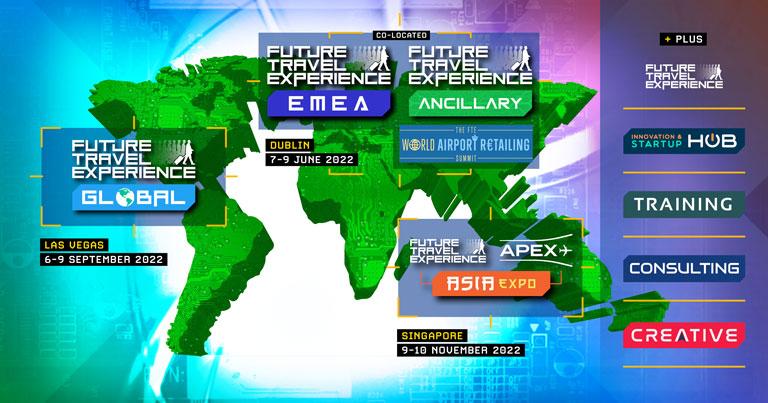
Biometrics & digital identity
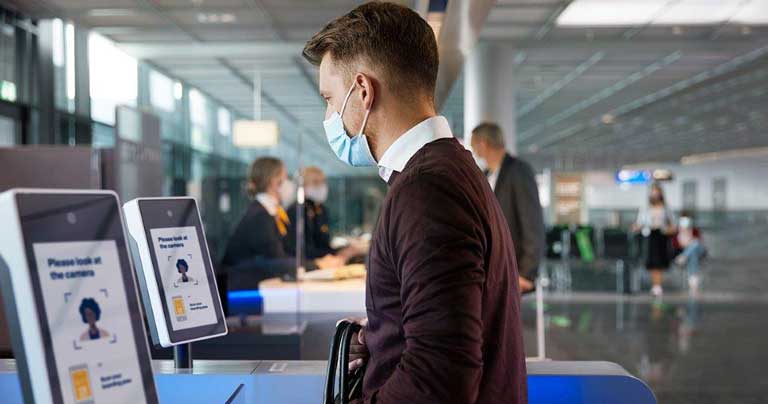
Biometrics has formed part of our annual trends report for a few years in a row now, and it is the technology’s ever-evolving nature that always makes it worthy of a mention. Since the pandemic hit, many airlines, airports and government agencies like the Transportation Security Administration (TSA) and United States Customs and Border Protection (U.S. CBP) continued to invest in advancing biometrics. The technology’s potential to create a more safe, seamless and contactless passenger experience, and its convenience, scalability and cost-effectiveness have really accelerated this trend and will continue to do so in 2022. Importantly, passenger acceptance of the technology is also growing. As IATA reported in its 2021 passenger survey, 73% of passengers are willing to share their biometric data to improve airport processes, compared to 46% in 2019.
Biometrics implementation has been at full speed around the world, with recent trials on both domestic and international flights. In America, San Francisco International Airport (SFO) and United Airlines trialled a low-touch, biometric-enabled airport experience from check-in to boarding, powered by SITA, for domestic travellers on select flights. The trial enabled passengers to link their driver’s license and flight details to their facial biometric at check-in. Betsy Landoll, Innovation & Experience Design, United Airlines, and Sherry Stein, Head of Technology Strategy, Americas, SITA, shared with FTE some of the key lessons-learned from the partnership, here.
Delta Air Lines is also setting a new standard for the industry as the first airline to build a dedicated bag drop space for TSA PreCheck customers travelling through Hartsfield-Jackson Atlanta International Airport. Delta SkyMiles members who use the Fly Delta app and have a TSA PreCheck membership will be able to drop off their bags, pass through the security checkpoint, and board their plane at the gate using only their digital identity.
In an interesting development last year, Apple announced that an upcoming update to its Wallet app will enable customers to use their mobile device as a digital identification in select US airports. The tech giant said that it is working with the TSA to enable airport security checkpoints to be “the first place customers can use their digital ID card in the Wallet”. The feature was previously expected to be released in late 2021, but Apple has now stated that it won’t be coming until “early 2022”.
Biometrics was also a prominent topic during FTE Global 2021, which took place in Las Vegas last month. Diane J. Sabatino, Deputy Executive Assistant Commissioner, Office of Field Operations, U.S. CBP, and Austin Gould, Assistant Administrator, RCA, TSA, discussed how the two agencies and their partners are collaborating to further secure and enhance the travel experience with biometrics while protecting the privacy of all travellers. Gould also shared that the TSA is “on the cusp of implementing a comprehensive identity management solution”, which is expected to bring great benefits to the industry.
The technology has improved drastically over the past few years, but the mandate for wearing face coverings in the airport terminal raised new challenges for vendors. New algorithms, however, are currently in development to ensure passengers can complete airport checks without removing their masks. In a recent interview with FTE, Patrick Sgueglia, Product Manager, Regulatory Services & Biometrics, Lufthansa, shared: “We’re working extensively with our IT partners and biometric providers like Amadeus, SITA, Vision-Box, NEC, Idemia and others, who are adapting their algorithms to be able to match up a person’s face even with a mask on. It’s a testament to how far the technology has come, that we’re able to incorporate this mask requirement that we didn’t expect to happen prior to COVID-19.”
2022 is undoubtedly going to be a big year for biometrics, and FTE will continue to keep a close eye on the latest developments.
Interested in the latest technologies and trends? Sign up to our newsletter >>Contactless technology & a touchless experience
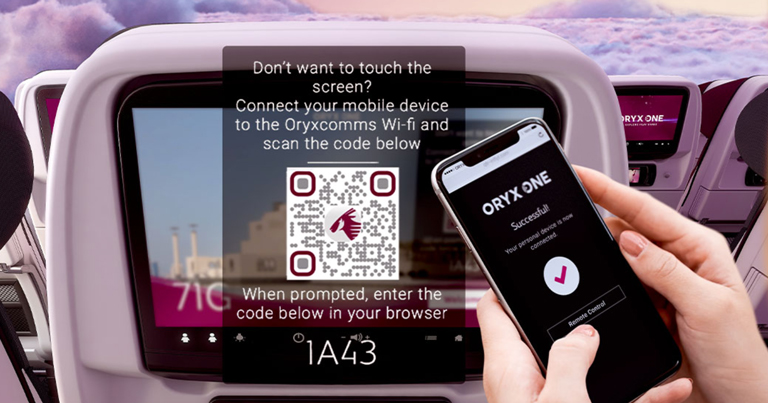
One of the big promises of biometrics technology is that it will enable a fully touchless experience for passengers, which has certainly accelerated its adoption even further in the wake of the COVID-19 pandemic. Meanwhile, onboard some airlines have made updates to their inflight entertainment (IFE) to offer a contactless experience and encourage a BYOD (bring your own device) model. Qatar Airways, for instance, announced plans to offer passengers touchless technology for its Oryx One inflight entertainment system (IFE) across its A350 fleet. The Zero-Touch technology, introduced in partnership with the Thales AVANT IFE system, will enable passengers to pair their personal electronic devices (PEDs) with their seat-back IFE screen by connecting to ‘Oryxcomms’ Wi-Fi and simply scanning a QR code displayed on the screen. They can then use their PEDs to navigate and enjoy more than 4,000 options on offer through the airline’s Oryx One IFE system.
The contactless experience vision is also shaping the future of airport retail. One example is Hudson Nonstop’s Amazon’s Just Walk Out technology stores in Dallas Love Field Airport (DAL) and Chicago Midway International Airport. Travellers are able to seamlessly enter the Hudson Nonstop store with a swipe of their credit card or using “Tap to Pay”, take the products they’re looking for, and then walk out of the store. The store merchandising layout provides visibility to essential products needed for the travel journey.
Virtual queueing
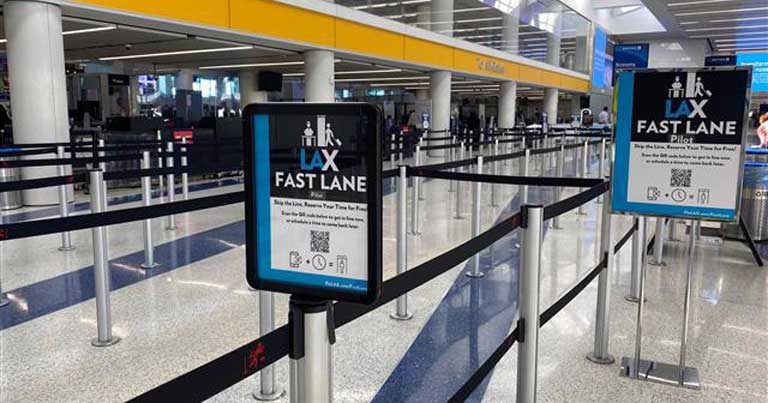
Tying in with the contactless journey is another trend that’s taking off rapidly at airports – virtual queueing. Virtual queueing enables passengers to book a slot to queue at airport touchpoints, instead of joining a physical line. The technology can help eliminate long lines, therefore improving social distancing and customer experience. Seattle-Tacoma International Airport (SEA) became one of the first airports in the US to trial a virtual queuing system as a solution for crowded general screening lines. Called SEA Spot Saver, the free digital reservation-based system for the US Transportation Security Administration (TSA) aimed to reduce wait times and crowding to better maintain physical distancing. The first trial of the SEA Spot Saver was designed for Alaska Airlines passengers at TSA Checkpoint 5 with Pangiam, and powered by Whyline and Copenhagen Optimization. The second trial, designed by VHT, was available to Delta Air Lines and all other passengers at TSA Checkpoint 2. Following the trial, VHT reported that the system dramatically exceeded expectations, with overall wait times reduced to 10 minutes. At FTE Global 2021 last month, Dave Wilson, Director, Airport Innovation, Port of Seattle, shared some of the main lessons learned from the trial of the technology at SEA, highlighting that not only has Spot Saver reduced waiting times, but users have also reported spending more time in SEA’s dining and retail facilities as a result of the time savings, which can only be a positive from a revenue generation perspective.
More recently, Los Angeles International Airport (LAX) also rolled out virtual queuing trial in partnership with the TSA for customers travelling with United Airlines. Some airlines, like Delta, have also used the tool to notify passengers when their seat is boarding.
Interested in the latest technologies and trends? Sign up to our newsletter >>Digital twins
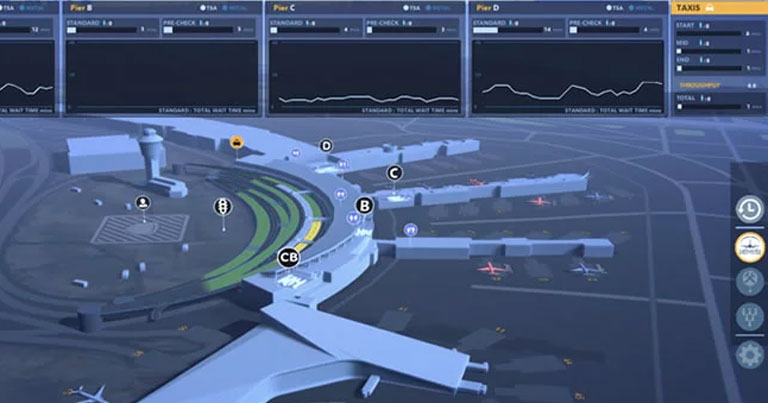
McKinsey describes Digital Twin (DT) as a “digital replica of a physical-world asset or process that integrates data from both the digital and material worlds, enabling companies to run virtual simulations before committing to physical-world actions”. Based on this description, you can see how digital twin can be an attractive technology for complex airport operations. A number of airports have already begun implementing DT tools, including Hong Kong International Airport and Vancouver International Airport (YVR). The HKIA Digital Twin collects real-time data fed from Internet of Things (IoT) devices deployed throughout the airport and transforms it into easy-to-read formats. With the use of predictive analytics, it can also provide alerts to the airport community, enabling better deployment of resources and resulting in cost saving and enhanced service.
During FTE Global 2021, YVR’s Lynette DuJohn highlighted that the airport’s “twin” will enable it to accelerate its understanding of complex systems, explore hypothetical changes, and enable faster and better decision-making, and it will also help the airport build new partnerships and contribute to the collective economic recovery.
Many industries, like advanced manufacturing, architecture, engineering and construction are already familiar with the benefits of DT, however, airports are still behind in the adoption of the technology. So, we expect more and more airports to realise the benefits of the technology in 2022.
Autonomous vehicles & robotics
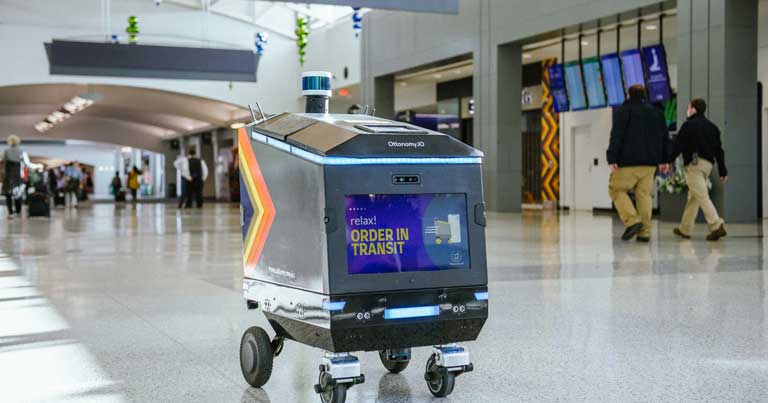
Autonomous delivery robots are becoming an increasingly common sight at airports, especially in the U.S. Last month, Cincinnati/Northern Kentucky International Airport (CVG), launched a fleet of fully autonomous delivery robots for food and retail. The Ottobots, operated by Ottonomy, were unveiled last week at CES 2022. The robots enable passengers to order contactless delivery directly to their location in Concourse B of the airport, delivered by an autonomous robot. Customers can select grab and go, beverage and travel items sold at select retail stores operated by Paradies Lagardère via orderatcvg.com on mobile devices.
CVG has also trialled a new robot, called Gita, by AtYourGate in collaboration with Piaggio Fast Forward. The robot has been adopted by a number of other airport in the U.S., including JFK, Philadelphia, Minneapolis-Saint Paul, San Francisco, Salt Lake City and Seattle-Tacoma. The rolling droids use visual sensing technology to follow the AtYourGate delivery staff members to reach their customers at their gate. CVG’s Senior Manager of Strategic Innovation, Naashom Marx, recently told FTE: “We hope to see more automation in the U.S. The next generation not only craves automation; they expect it to be the norm. Even this small following robot can eventually lead to adoption of self-driving cars and more.”
As part of ambitions to create smarter and future-proof ground handling processes, many airports are turning to the use of autonomous technology. Royal Schiphol Group, for instance, launched a major programme to create a fully autonomous airport by 2050. In line with these ambitions, last February the airport group launched its new ‘Autonomous Airside Operations’ programme, which will see all airside vehicles be replaced by an interconnected fleet of autonomous, emission-free vehicles and all associated processes will be automated. In an interview with FTE, Royal Schiphol Group’s Innovation Lead, Rosina Kotey, said that to make the transition from the current state of operations towards a fully autonomous airside operations, there is still a lot that needs to be defined. “Many new processes need to be developed in a step change approach, while working towards a completely new operational reality. While the ambition for an autonomous airside is clear, many organisational aspects remain uncertain. We need to develop an integration strategy and an agile implementation plan that takes things such as the human factor in relation to autonomous technology, the required change in the internal and external stakeholder landscape, but also liability and legislation into account.”
Bottom line: Re-imagining CX
While we focus on these cutting-edge technology trends, we can’t ignore the fact that the passenger experience has become more fragmented and disjointed following the COVID-19 pandemic. With travel restrictions changing constantly, it seems like airlines and airports have struggled to find a way to keep passengers informed throughout their journey, and more importantly to provide a stress-free experience. Technology and innovation are only a part of the solution, and only by communicating and collaborating with one another will the industry be able to ensure that all travel touchpoints work in sync.
Interested in the latest technologies and trends? Sign up to our newsletter >>
